By Charles Carter, 18/11/22
Zeteng Yan from Tsinghua University, China has been awarded national runner up in the annual James Dyson Award for their wave-assisted coastal rubbish collector concept and prototype, SHIELD.
The device is low cost, low energy and doesn’t require any manual operation.
It also helps to collect rubbish when it first enters the ocean, preventing it from floating out to various ocean garbage patches, according to its creator.
The James Dyson Award is an international design award that celebrates, encourages and inspires the next generation of design engineers.
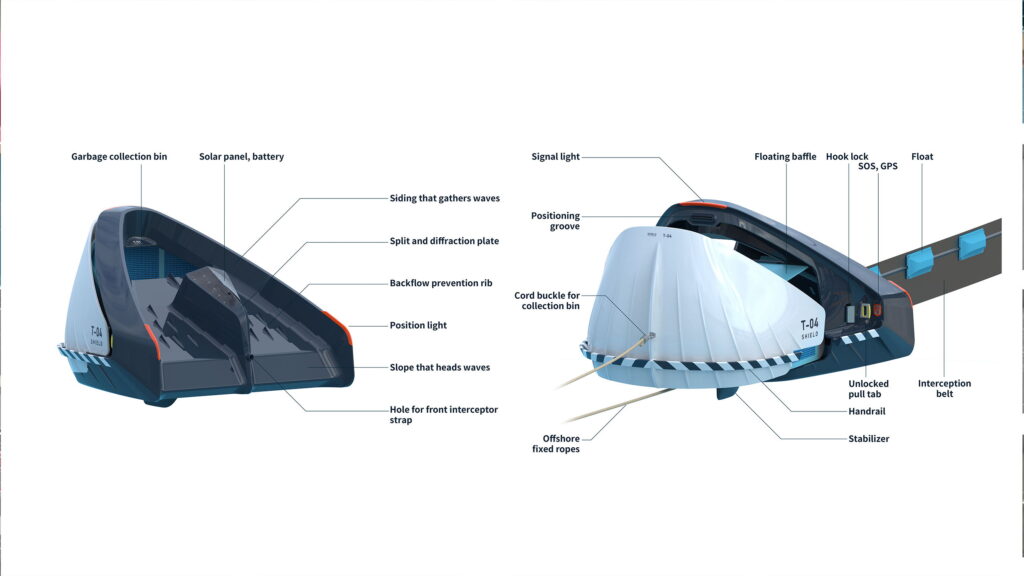
Here is Zeteng’s competition submission:
What it does
More than half of the world’s population lives near the coast, and near-shore activities generate large amounts of waste.
The device is designed to collect and defend nearshore garbage, and use ocean waves as power to achieve garbage collection.
Your inspiration
The nearshore floating garbage is highly mobile, and has a high probability of grounding on the beach.
They are easy to return to the sea repeatedly.
If we can build a garbage collection and defense system along the coast, its role is like wearing a “mask” to the coastline, which can not only prevent garbage from entering the sea, but also prevent other non-local garbage from coming ashore.
This can also reduce the retention time of garbage, shorten the hazard cycle, and reduce the spread, reduce the scope of harm, and reduce the chance of contact with marine organisms and the secondary microplastics produced under physical action.
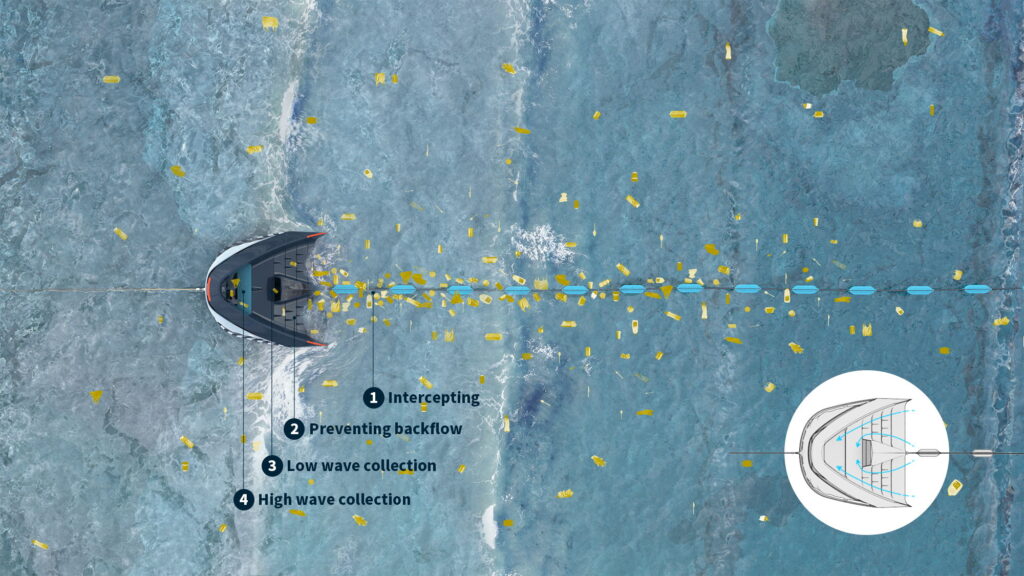
How it works
The front and rear of the equipment are fixed by the rope dragging, so that the relative position of the equipment can be fixed to improve the collection efficiency, and also to prevent the equipment from being lost and causing itself to become garbage.
The equipment is divided into four levels of interception and collection: the first level is the interception belt.
The second level is the steps and ridges on the surf slope, they will hang the garbage to prevent the returning seawater from dragging the rubbish back into the water.
The third stage is the low-wave collection port.
Under the diversion and diffraction of the wave-gathering side plate, the middle V-shaped diverter plate and the diffraction arc, the waves will push the garbage into the middle low-wave collection port; the fourth stage is the largest opening.
The high wave collection port, where, ideally, most of the waste would be pushed and finally stored in the waste bin.
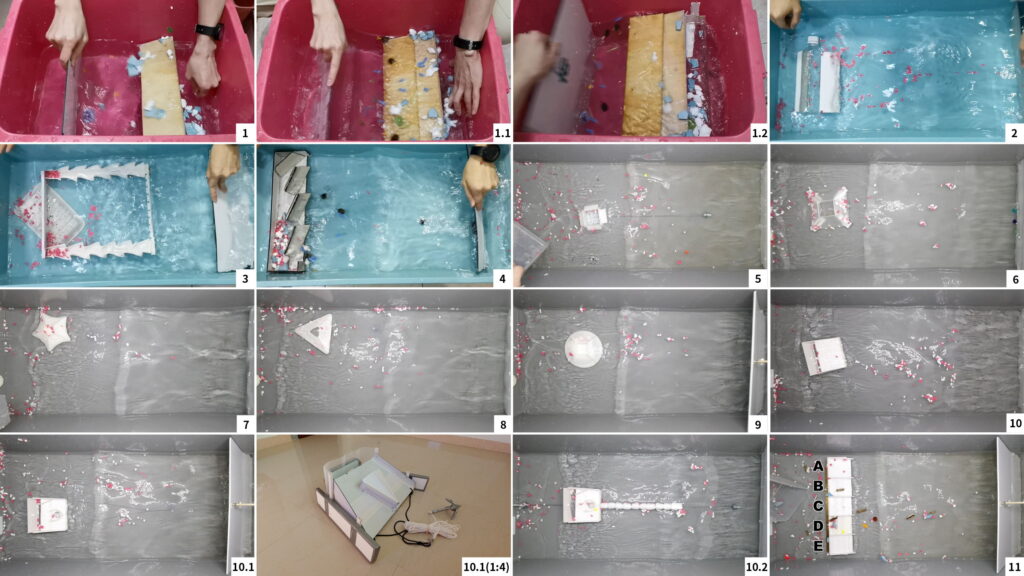
Design process
The ocean wave resource is infinite and sustainable, and it is the principle and purpose of this design to use the ocean waves as power instead of relying on non-renewable energy.
One of the characteristics of nearshore is that the garbage is easily pushed by the waves to the position of the high tide line and forms a striped garbage dump.
Assuming that a groove is dug at this position, the garbage can be driven into there.
Obviously, such a simple way will affect tourists, so we can move this basic structure forward to the nearshore waters, so that the equipment can receive the waves in advance, and then through a reasonable structural design, the energy of the waves can be enhanced, and as a booster Trash pushed into the device.
In the early stage, I designed a variety of different angles, slopes and steps, and tested a 1:20 prototype with a homemade artificial wave device.
After that, the solution was optimized with the help of the software’s fluid simulation, and a 1:4 prototype was produced for testing at the seaside, and finally a considerable amount of nearshore garbage was successfully captured.
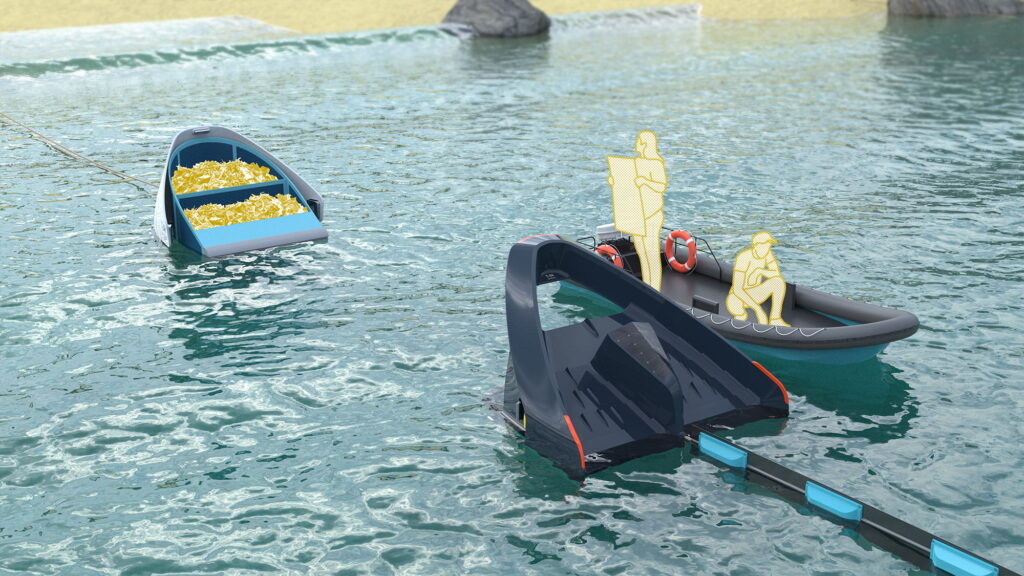
How it is different
1. Low energy dependence: Use ocean waves as power to collect nearshore floating garbage, no need to rely on external electricity or other non-renewable energy sources, and no manual operation is required in the process of garbage collection.
2. Simple structure: low-tech physical means for garbage collection, low equipment cost, easy maintenance, and high achievability.
3. High utilization rate: The equipment has been placed in the nearshore waters, and the waves can provide a steady stream of power, which can run 24 hours a day.
4. Early intervention: It can play a defensive role, that is, the garbage will be intercepted and captured soon after it is generated, so that the local garbage can be solved on the spot without affecting the surrounding waters.
5. Small impact on tourists: The equipment has a certain distance from the shore, so it has little impact on near-shore tourists.
Future plans
The design has obtained a utility model patent and had a certain commercial value. I plan to make a 1:1 prototype for long-term testing and observation.
Its main body size is about 2.6*2.6*2 meters. If the design is rolled out, it could contribute to global marine litter reduction.
Questions for you. Comment below
- First thought that comes into your head?
- Pros and cons according to you?
- Other applications of this approach?
- What could this be combined with?
Links
https://www.jamesdysonaward.org/en-CA/2022/project/shield/

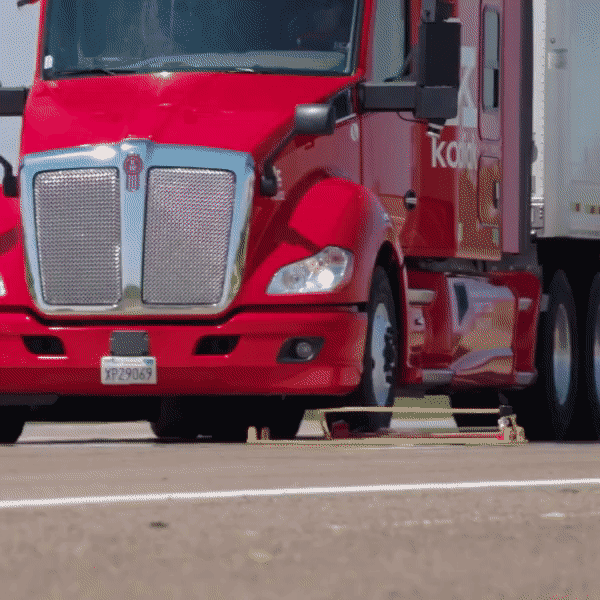

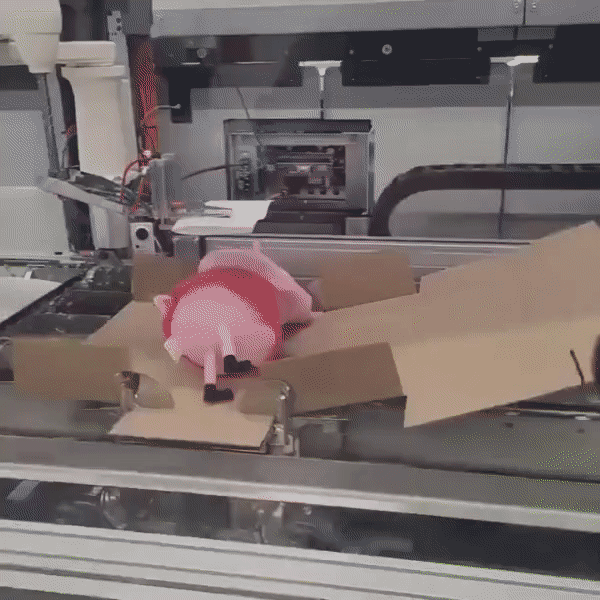
Your article helped me a lot, is there any more related content? Thanks!
Thank you for your sharing. I am worried that I lack creative ideas. It is your article that makes me full of hope. Thank you. But, I have a question, can you help me?
Thanks for sharing. I read many of your blog posts, cool, your blog is very good.
You’re so interesting! I don’t think I’ve read through anything like this before. So great to find someone with a few original thoughts on this subject matter. Really.. thanks for starting this up. This site is something that is required on the web, someone with a bit of originality.
|Tato stránka má rozhodně všechny informace, které jsem o tomto tématu chtěl a nevěděl jsem, koho se zeptat.|Dobrý den! Tohle je můj 1. komentář tady, takže jsem chtěl jen dát rychlý